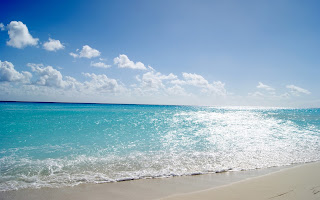Sea Water In Mixing Of Concrete?
As we know Sea water not helpful and useful in construction also for drinking purposes
here discussed about that sea water helpful in mixing of concrete for PCC.
Sea water has a salinity of about 3.5 per cent. In that about 78% is sodium chloride and 15% is chloride and sulphate of magnesium. Sea water also contain small quantities of sodium and potassium salts. This can react with reactive aggregates in the same manner as alkalies in cement. Therefore sea water should not be used even for PCC if aggregates are known to be potentially alkali reactive. It is reported that the use of sea water for mixing concrete does not appreciably reduce the strength of concrete although it may lead to corrosion of reinforcement in certain cases. Research workers are unanimous in their opinion, that sea water can be used in un-reinforced concrete or mass concrete. Sea water slightly accelerates the early strength of concrete. But it reduces the 28 days strength of concrete by about 10 to 15 per cent. However, this loss of strength could be made up by redesigning the mix. Water containing large quantities of chlorides in sea water may cause efflorescence and persistent dampness. When the appearance of concrete is important sea water may be avoided. The use of sea water is also not advisable for plastering purpose which is subsequently going to be painted.
Divergent opinion exists on the question of corrosion of reinforcement due to the use of sea water. Some research workers cautioned about the risk of corrosion of reinforcement particularly in tropical climatic regions, whereas some research workers did not find the risk of corrosion due to the use of sea water. Experiments have shown that corrosion of reinforcement occurred when concrete was made with pure water and immersed in pure water when the concrete was comparatively porous, whereas, no corrosion of reinforcement was found when sea water was used for mixing and the specimen was immersed in salt water when the concrete was dense and enough cover to the reinforcement was given. From this it could be inferred that the factor for corrosion is not the use of sea water or the quality of water where the concrete is placed. The factors effecting corrosion is permeability of concrete and lack of cover. However, since these factors cannot be adequately taken care of always at the site of work, it may be wise that sea water be avoided for making reinforced concrete. For economical or other passing reasons, if sea water cannot be avoided for making reinforced concrete, particular precautions should be taken to make the concrete dense by using low
water/cement ratio coupled with vibration and to give an adequate cover of at least 7.5 cm.
The use of sea water must be avoided in prestressed concrete work because of stress corrosion
and undue loss of cross section of small diameter wires. The latest Indian standard IS 456 of 2000 prohibits the use of Sea Water for mixing and curing of reinforced concrete and prestressed concrete work. This specification permits the use of Sea Water for mixing and curing of plain cement concrete (PCC) under unavoidable situation..
It is pertinent at this point to consider the suitability of water for curing. Water that contains impurities which caused staining, is objectionable for curing concrete members whose look is important. The most common cause of staining is usually high concentration of iron or organic matter in the water. Water that contains more than 0.08 ppm. of iron may be avoided for curing if the appearance of concrete is important. Similarly the use of sea water may also be avoided in such cases. In other cases, the water, normally fit for mixing can also be used for curing.

No comments:
Post a Comment